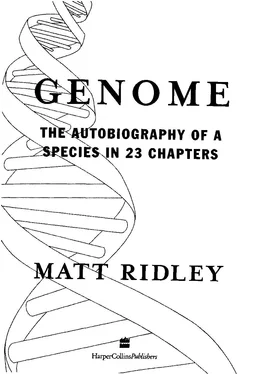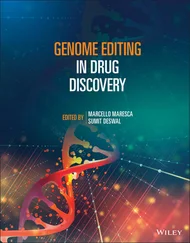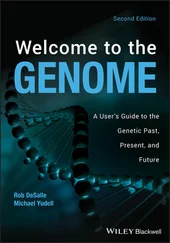Genome - Matt Ridley
Здесь есть возможность читать онлайн «Genome - Matt Ridley» — ознакомительный отрывок электронной книги совершенно бесплатно, а после прочтения отрывка купить полную версию. В некоторых случаях можно слушать аудио, скачать через торрент в формате fb2 и присутствует краткое содержание. Жанр: Старинная литература, на английском языке. Описание произведения, (предисловие) а так же отзывы посетителей доступны на портале библиотеки ЛибКат.
- Название:Matt Ridley
- Автор:
- Жанр:
- Год:неизвестен
- ISBN:нет данных
- Рейтинг книги:5 / 5. Голосов: 1
-
Избранное:Добавить в избранное
- Отзывы:
-
Ваша оценка:
- 100
- 1
- 2
- 3
- 4
- 5
Matt Ridley: краткое содержание, описание и аннотация
Предлагаем к чтению аннотацию, описание, краткое содержание или предисловие (зависит от того, что написал сам автор книги «Matt Ridley»). Если вы не нашли необходимую информацию о книге — напишите в комментариях, мы постараемся отыскать её.
Matt Ridley — читать онлайн ознакомительный отрывок
Ниже представлен текст книги, разбитый по страницам. Система сохранения места последней прочитанной страницы, позволяет с удобством читать онлайн бесплатно книгу «Matt Ridley», без необходимости каждый раз заново искать на чём Вы остановились. Поставьте закладку, и сможете в любой момент перейти на страницу, на которой закончили чтение.
Интервал:
Закладка:
C U R E S 253
In the same way, genetic engineering is as safe and as dangerous as the genes that are engineered. Some are safe, some are dangerous.
Some are green, some are bad for the environment. Roundup-resistant rape may be eco-unfriendly to the extent that it encourages herbicide use or spreads its resistance to weeds. Insect-resistant potatoes are eco-friendly to the extent that they require fewer insecticide applications, less diesel for the tractors applying the insecticides, less road use by the trucks delivering the insecticides and so on.
The opposition to genetically modified crops, motivated more by hatred of new technology than love of the environment, largely chooses to ignore the fact that tens of thousands of safety trials have been done with no nasty surprises; that gene swapping between different species, especially microbes, is now known to be far more common than was once believed, so there is nothing 'unnatural'
about the principle; that before genetic modification, plant breeding consisted of deliberate and random irradiation of seeds with gamma rays to induce mutations; that the main effect of genetic modification will be to reduce dependence on chemical sprays by improving resistance to diseases and pests; and that fast increases in yields are good for the environment, because they take the pressure off the cultivation of wild land.
The politicisation of the issue has had absurd results. In 1992, Pioneer, the world's biggest seed company, introduced a gene from brazil nuts into soya beans. The purpose was to make soya beans more healthy for those for whom they are a staple food by correcting soya beans' natural deficiency in a chemical called methionine. However, it soon emerged that a very few people in the world develop an allergy to brazil nuts, so Pioneer tested its transgenic soya beans and they proved allergenic, too, to such people. At this point, Pioneer alerted the authorities, published the results and abandoned the project. This was despite the fact that calculations showed that the new soya-bean allergy would probably kill no more than two Americans a year and could save hundreds of thousands worldwide from malnutrition. Yet instead of becoming an example of extreme corporate caution, the story was repackaged by environmentalists 2 5 4 G E N O M E
and told as a tale of the dangers of genetic engineering and reckless corporate greed.
None the less, and even allowing for the cautious cancellation of many projects, it is a safe estimate that by the year 2000, fifty to sixty per cent of the crop seed sold in the United States will be genetically modified. For better or for worse, genetically modified crops are here to stay.
So are genetically modified animals. Putting a gene into an animal so that it and its offspring are permanently altered is now simple in animals as well as plants. You just stick it in. Suck your gene into the mouth of a very fine glass pipette, jab the tip of the pipette into a single-celled mouse embryo, extracted from a mouse twelve hours after mating, make sure the tip of the pipette is inside one of the cell's two nuclei, and press gently. The technique is far from perfect: only about five per cent of the resulting mice will have the desired gene switched on, and in other animals such as cows, success is even rarer. But in those five per cent the result is a 'transgenic'
mouse with the gene incorporated in a random position on one of its chromosomes.
Transgenic mice are scientific gold dust. They enable scientists to find out what genes are for and why. The inserted gene need not be derived from a mouse, but could be from a person: unlike in computers, virtually all biological bodies can run any kind of software. For instance, a mouse that is abnormally susceptible to cancer can be made normal again by the introduction of a human chromosome 18, which formed part of the early evidence for a tumour-suppressor gene on chromosome 18. But rather than inserting whole chromosomes, it is more usual to add a single gene.
Micro-injection is giving way to a subtler technique, which has one distinct advantage: it can enable the gene to be inserted in a precise location. At three days of age, the embryo of a mouse contains cells known as embryonic stem cells or ES cells. If one of these is extracted and injected with a gene, as Mario Capecchi was the first to discover in 1988, the cell will splice that gene in at precisely the point where the gene belongs, replacing the existing C U R E S 2 5 5
version of the gene. Capecchi took a cloned mouse oncogene called int-2, inserted it into a mouse cell by briefly opening the cell's pores in an electric field, and then observed as the new gene found the faulty gene and replaced it. This procedure, called 'homologous recombination', exploits the fact that the mechanism that repairs broken D N A often uses the spare gene on the counterpart chromosome as a template. It mistakes the new gene for the template and corrects its existing gene accordingly. Thus altered, an ES cell can then be placed back inside an embryo and grown into a 'chimeric'
mouse - a mouse in which some of the cells contain the new gene.3
Homologous recombination allows the genetic engineer not only to repair genes but to do the opposite: deliberately to break working genes, by inserting faulty versions in their place. The result is a so-called knockout mouse, reared with a single gene silenced, the better to reveal that gene's true purpose. The discovery of memory mechanisms (see the chapter on chromosome 16) owes much to knockout mice, as do other fields of modern biology.
Transgenic animals are useful not only to scientists. Transgenic sheep, cattle, pigs and chickens have commercial applications. Sheep have already been given the gene for a human clotting factor in the hope that it can be harvested from their milk and used to treat haemophiliacs. (Almost incidentally, the scientists who performed this procedure cloned the sheep Dolly and displayed her to an amazed world in early 1997.) A company in Quebec has taken the gene that enables spiders to make silk webs and inserted it into goats, hoping to extract raw silk protein from the goats' milk and spin it into silk. Another company is pinning its hope on hens' eggs, which it hopes to turn into factories for all sorts of valuable human products, from pharmaceuticals to food additives. But even if these semi-industrial applications fail, transgenic technology will transform animal breeding, as it is transforming plant breeding, generating beef cattle that put on more muscle, dairy cattle that give more milk or chickens that lay tastier eggs.4
It all sounds rather easy. The technical obstacles to breeding a transgenic or a knockout human being are becoming trivial for a 256 G E N O M E
good team at a well-equipped laboratory. In a few years from now you probably could, in principle, take a complete cell from your own body, insert a gene into a particular location on a particular chromosome, transfer the nucleus to an egg cell from which the nucleus had been removed, and grow a new human being from the embryo. The person would be a transgenic clone of yourself, identical in every way except, say, in having an altered version of the gene that made you go bald. You could alternatively use ES cells from such a clone to grow a spare liver to replace the one you sacrificed to the bottle. Or you could grow human neurons in the laboratory to test new drugs on, thus sparing the lives of laboratory animals.
Or, if you were barking mad, you could leave your property to your clone and commit suicide secure in the knowledge that something of you still existed, but slightly improved. Nobody need know that this person is your clone. If the increasing resemblance to you later became apparent as he grew older, the non-receding hairline would soon lay suspicions to rest.
Читать дальшеИнтервал:
Закладка:
Похожие книги на «Matt Ridley»
Представляем Вашему вниманию похожие книги на «Matt Ridley» списком для выбора. Мы отобрали схожую по названию и смыслу литературу в надежде предоставить читателям больше вариантов отыскать новые, интересные, ещё непрочитанные произведения.
Обсуждение, отзывы о книге «Matt Ridley» и просто собственные мнения читателей. Оставьте ваши комментарии, напишите, что Вы думаете о произведении, его смысле или главных героях. Укажите что конкретно понравилось, а что нет, и почему Вы так считаете.












